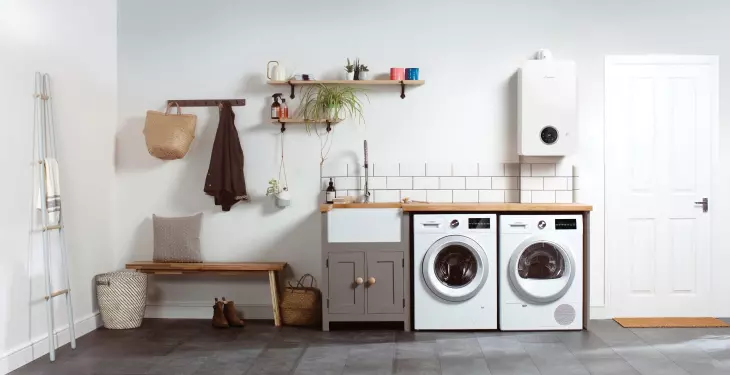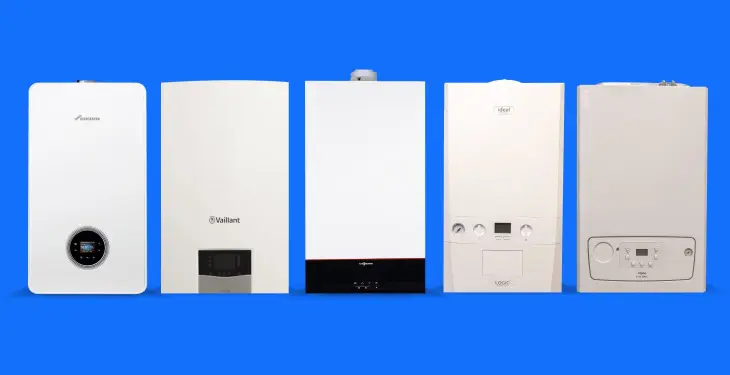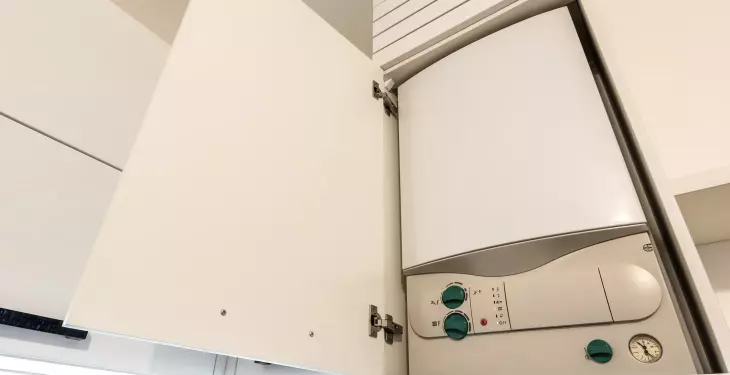

Written by Stephen Day
Gas Safe Engineer
Updated: 8th December, 2025
Radiator covers can reduce heat output if airflow is restricted, but the effect varies by design and installation.
Get a new boiler quote, save up to £550 per year (0% APR available).
Radiator covers are popular for hiding older radiators, reducing noise and improving interior design.
However many homeowners worry that covers waste heat or make the home harder to warm.
The simple answer is that most covers reduce the amount of heat entering the room, but the extent depends on the design and how well air is able to move.
Radiators heat rooms by convection. Warm air rises from the top of the radiator and draws cooler air up from the floor.
This constant movement is what warms the space. If a cover blocks this movement, heat becomes trapped inside the cabinet rather than circulating into the room.
Covers also trap warm air around the thermostatic radiator valve, which can cause the valve to shut off early before the room has reached the correct temperature.
Based on standard industry testing conditions, solid covers with closed tops lose the most heat.
Ventilated covers with wide top openings allow much better airflow and can reduce heat loss to a minimal level.
We often see rooms heating faster once restrictive covers are removed or replaced with a design that lets warm air move freely.
Yes. All radiator covers reduce heat output to some extent.
The level of heat loss depends on the design, ventilation, spacing and room layout.
Below is a clear comparison.
Cover type | Expected heat loss | Airflow rating | Notes |
|---|---|---|---|
Solid front, closed top | High | Poor | Warm air is trapped and room heats slowly |
Solid front, open top | Medium | Fair | Some airflow but still restricted at the sides |
Slatted or ventilated front with open top | Low | Good | Allows warm air to rise and circulate |
Floating shelf only (no cabinet) | Very low | Very good | Minimal obstruction to airflow |
Ventilated covers designed with spacing that supports airflow perform much better than enclosed designs.
These gaps reduce airflow resistance and help maintain efficient heat circulation.
Covers have a bigger effect in the following situations:
Small rooms where airflow is already limited
Radiators placed behind furniture
Homes using low temperature heating, such as heat pumps, which rely on free airflow to warm the room
Older radiators that already struggle with output
High demand rooms, such as living rooms or open plan spaces
In these conditions, even a small reduction in airflow can make the room feel noticeably cooler.
We often see homeowners report that their room reaches temperature faster after removing a restrictive cover.
A well designed cover with these features usually performs well:
Open top
Slatted or ventilated front
At least a few centimetres of space between the radiator and internal panels
No objects placed on top
These allow warm air to rise freely and reduce heat loss to a low level.
Radiator covers are generally safe if installed correctly. There are a few simple points to keep in mind:
Avoid placing items on top of the cover. Surfaces can still reach high temperatures during heating.
Check that the cover does not trap heat around electrical items, pipes or the thermostatic radiator valve.
If your cover becomes discoloured or warped, it may be too close to the radiator and should be adjusted.
If your home still struggles to warm up after improving airflow, it may indicate that the radiator is undersized or the boiler is not running efficiently.
You may want to remove or replace the cover if:
The room never reaches the set temperature
The radiator takes a long time to warm the space
Furniture blocks the sides or front of the cover
You use low temperature heating
Removing the cover or switching to a ventilated design often helps heat circulate more effectively.
Look for these design features when buying a new cover:
Open top or large top grille
Slatted or perforated front panel
Space around the sides and base of the radiator
Material that can tolerate warm air without warping
A design that allows the thermostatic radiator valve to remain exposed
Also consider the room size, radiator output and how often the heating runs.
In high demand rooms, a ventilated cover is always the better choice.
You can reduce heat loss without removing the cover completely.
Move furniture away from the cover.
Choose a design with wide slats and open tops.
Check that curtains do not hang over the cover.
Ensure the thermostatic radiator valve is not enclosed.
If the radiator is too small for the room, even the best cover will not improve heating.
You may need a higher output radiator or improved system performance.
Radiators transfer heat through convection. Warm air rises from the top and is replaced by cooler air from the room.
A cover interrupts this movement by trapping heat inside the cabinet. This can cause:
A slower warm up time
A lower overall room temperature
Thermostatic radiator valves shutting off too early
Higher energy use for the same heating level
Understanding how airflow works helps explain why design matters so much.
Even a small change in airflow can have a noticeable impact on how a room feels.
Radiator covers do block heat, but the effect varies.
A solid, enclosed cover can reduce heat output quite significantly because it blocks the airflow needed for radiators to warm a room.
Ventilated covers with open tops allow warm air to rise freely and limit heat loss to a low level.
Improving airflow, avoiding clutter around the cover and choosing a well designed cabinet are simple ways to maintain warmth without removing the cover.
Last updated: 8th December, 2025

Written by Stephen Day
Gas Safe Engineer at iHeat
Stephen Day is a Gas Safe registered and FGAS certified engineer with over 20 years of hands-on experience in the heating, cooling, and renewable energy industry, specialising in boiler installations, air conditioning, and heat pump systems.
LinkedInArticles by Stephen Day are reviewed by iHeat’s technical team to ensure accuracy and reliability.

19th December, 2025
The best budget boilers are Ideal, Alpha, Baxi, Worcester Bosch and Vaillant models, compa...
 Read Article
Read Article

19th December, 2025
The most reliable boiler brands in the UK: Worcester Bosch, Vaillant, Ideal, Viessmann, an...
 Read Article
Read Article

19th December, 2025
An airing cupboard is a heated storage space that uses warmth from a hot water cylinder or...
 Read Article
Read Article
No obligation. Takes less than 60 seconds.